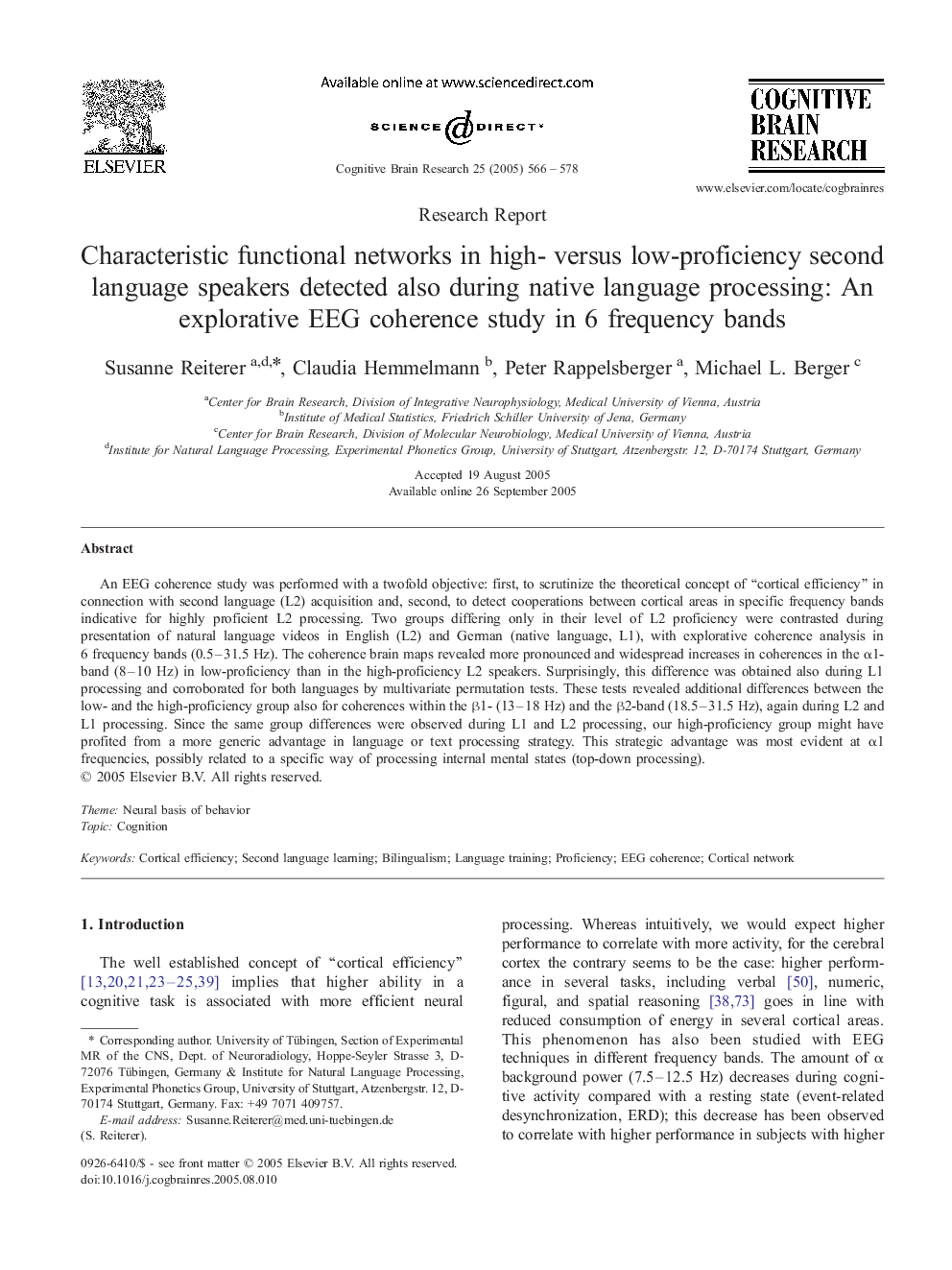| Article ID | Journal | Published Year | Pages | File Type |
|---|---|---|---|---|
| 9408005 | Cognitive Brain Research | 2005 | 13 Pages |
Abstract
An EEG coherence study was performed with a twofold objective: first, to scrutinize the theoretical concept of “cortical efficiency” in connection with second language (L2) acquisition and, second, to detect cooperations between cortical areas in specific frequency bands indicative for highly proficient L2 processing. Two groups differing only in their level of L2 proficiency were contrasted during presentation of natural language videos in English (L2) and German (native language, L1), with explorative coherence analysis in 6 frequency bands (0.5-31.5 Hz). The coherence brain maps revealed more pronounced and widespread increases in coherences in the α1-band (8-10 Hz) in low-proficiency than in the high-proficiency L2 speakers. Surprisingly, this difference was obtained also during L1 processing and corroborated for both languages by multivariate permutation tests. These tests revealed additional differences between the low- and the high-proficiency group also for coherences within the β1- (13-18 Hz) and the β2-band (18.5-31.5 Hz), again during L2 and L1 processing. Since the same group differences were observed during L1 and L2 processing, our high-proficiency group might have profited from a more generic advantage in language or text processing strategy. This strategic advantage was most evident at α1 frequencies, possibly related to a specific way of processing internal mental states (top-down processing).
Keywords
Related Topics
Life Sciences
Neuroscience
Behavioral Neuroscience
Authors
Susanne Reiterer, Claudia Hemmelmann, Peter Rappelsberger, Michael L. Berger,
